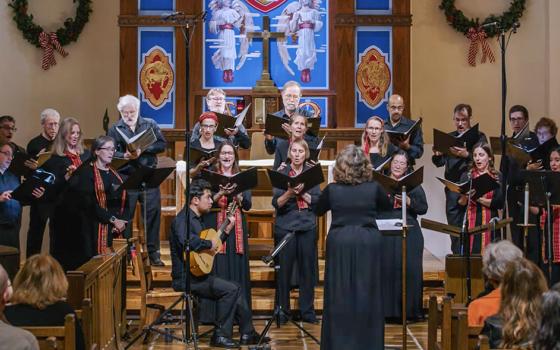One of the commenters on my blog post about playing the organ at St. Joseph’s Church mentioned going on an “organ crawl” in Holland. For those unfamiliar with the term, an “organ crawl” is when one or more organists make a tour of instruments in a region. I do not know why the word “crawl” is employed, except that some organs are in lofts with difficult access.
In the event, my organ crawl of Northeast Connecticut continued this weekend. On Friday, I went to St. Mark’s Episcopal Chapel in Storrs, Connecticut, located right on the campus of the University of Connecticut. St. Mark’s hosts a 1978 organ built by John Brombaugh, an organ builder in Oregon. In that summer of 1978, I was a go-fer on the project of installing this organ and learned a great deal about the intricate mechanics of the instrument.
Last week, I discussed the difference between tracker, or mechanical, action instruments which employ wooden levers to control the connection from the keys to the pipes, and the far more common electric or electro-pneumatic pipe organs which use an electric circuit to connect the keys to the pipes. Of course, most of the great organs Bach would have played did not employ electricity, which had not yet been mastered. Consequently, around the middle of the last century, some organists and organ builders explored returning to the earlier methods of organ construction, using trackers not electronics.
The seminal event for Americans in this movement was the installation of the Flentrop organ in the Adolphus Busch Hall at the Busch-Reisinger Museum of North Germanic Art on the campus of Harvard University in 1958. This organ, built in Holland, was specifically designed to mimic the kinds of baroque organs Bach would have played and it became famous when the great American organist E. Power Biggs performed on the instrument for his weekly radio show and subsequently recorded the entire works of Bach on the instrument. Busch Hall, with its exquisite acoustics, is one of the great shrines of American organ music.
Flentrop would go on to install other important organs in America, most notably at the Duke University chapel and at Holy Name Cathedral in Chicago. Other foreign firms installed major organs in the U.S., for example, there are Von Beckeraths at Yale University and the Cathedral of St. Paul in Pittsburgh.
Soon, what we might call the “hermeneutic of reform” took root among many American organ builders. Charles Fisk, a Massachusetts organ builder, installed a tracker action organ in King’s Chapel in Boston and then, not far from the Flentrop, another tracker at the Memorial Chapel in Harvard Yard. Fisk’s more prominent recent instruments include those in the symphony halls in Dallas, Seattle, Yokohoma and at Oberlin College. Fritz Noack, another Massachusetts organ builder, began making beautiful tracker instruments, including the organ at the cathedral of St. John the Baptist in Savannah and the historic Pohick Church, where George Washington was a vestryman, in Virginia.
John Brombaugh joined the list of organ builders making these traditionally styled instruments and when the Episcopal Chapel in Storrs decided it wanted a classic tracker organ, they contracted with Brombaugh. Whereas Fisk and others had made some accommodations with more modern methods, for instance, having a swell box, enclosed behind shades to regulate the volume and pipes appropriate for the 19th century French repertoire, Brombaugh built organs that were considered pristine. As the St. Mark’s organ would also be adjacent to the university and its Fine Arts School, the teaching value of such a rigorously traditional instrument was enormous. The instrument was built in Oregon and then brought to Connecticut and re-assembled. I remember that we had to cut away a part of the doorway to fit the casework inside!
The organ seems out of place at first. It has a classic look, with pipes of polished tin and intricately carved wooden shades above them, and appears like it could have fallen out the loft of any 18th century church. The chapel itself, on the other hand, is starkly modern, white painted bricks, with tall slender windows that contain prisms. It is beautiful, but decidedly 20th century. But, what jars visually at first soon gives way when the organ is played. As with the organ at St. Joseph’s, it has a rich diapason chorus, the basic set of stops that are most frequently used. The flutes are more distinct, less soft than the flutes found on many instruments, capable of intense solo work but very lovely. The 2’ foot flute on the Positiv is called a “cigarflute” because the pipes look like little cigars. The Vox Humana stop on the Great is very severe, possessing the kind of reedy timbre that makes you sit up straight.
When I first arrived, I faced a conundrum. I pulled the “wind” knob, which normally turned on the organ, and nothing happened. I walked behind and the bellows were gone. I ran to the parish office and there found a nice, young British man, who is the current music director and he explained that they no longer allow people to come in at odd hours and play. I explained my work on the installation of the instrument, and my long association with the previous music director and he graciously showed me where the switch was to turn the organ on. He also explained that the bellows had been moved to underneath the floor to allow more space in the cramped choir loft. There is a kind of camaraderie among organists, and almost always, people are happy to allow guests to come in and tinkle the keys.
At the Brombaugh, I stuck with Bach and, for the most part, Bach stuck with me. The action is so sensitive, every wrong note is acutely, painfully obvious. But, as music memory continued to grab hold of my hands, the music sounded good. Not great, but good. As there was an Episcopal hymnal at hand, I finished with “Guide me Thou, O Great Jehovah” which regular readers will know is one of my favorite hymns. And, as I played that hymn, I gave thanks for the many ways Great Jehovah has, in fact, guided me so far.




